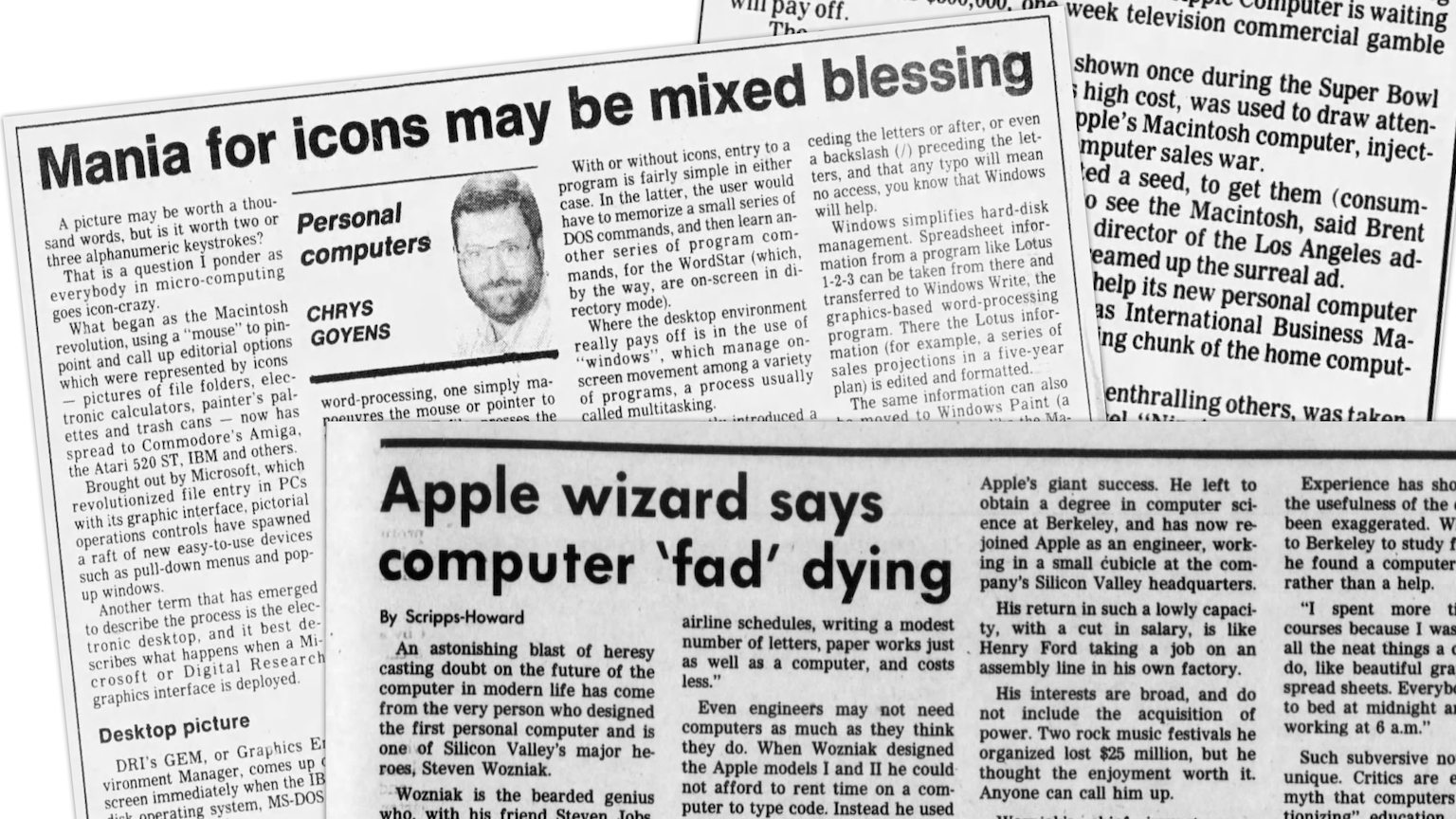In 1903, New York Times predicted that airplanes would take 10 million years to develop
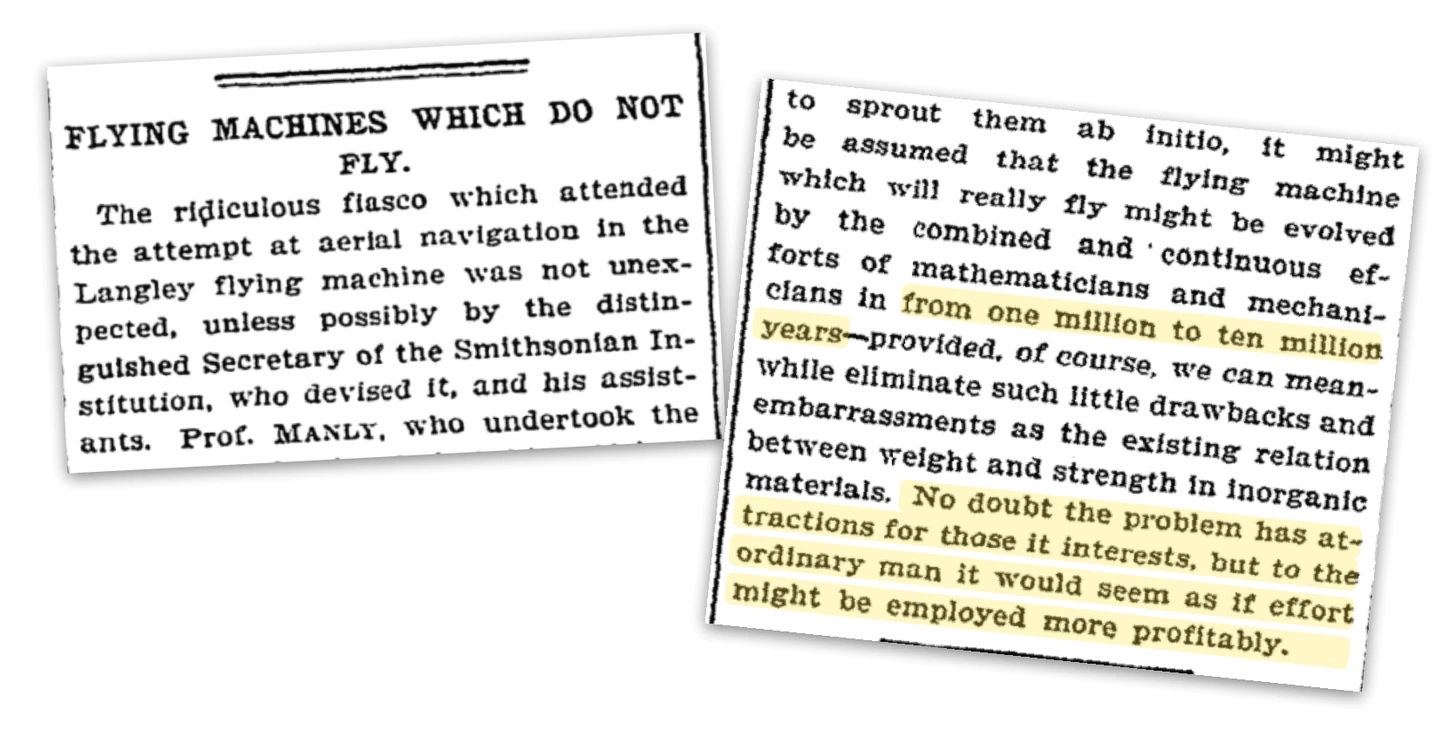
- The media once deemed flight, both in air and space, impossible or an act of egotism.
- Perhaps most infamously, the New York Times predicted that airplanes would take one to ten million years to develop. Merely nine weeks later, the Wright Brothers achieved manned flight.
- The pathologically cynical always will find a reason to complain.
The cynical narrative around the private space race feels unique to this moment of growing discontent about wealthy technologists and inequality, but it perfectly mirrors cynical (often forgotten) reactions to the early pursuit of air and space travel. We did a round up.
1901: The U.S. Navy called flight a “vain fantasy”
George W. Melville, Engineer-in-Chief of the U.S. Navy, wrote a scathing article about the pursuit of manned flight. He began with a Shakespeare quote that implied the goal was a childish “vain fantasy” that “is as thin of substance as the air”:
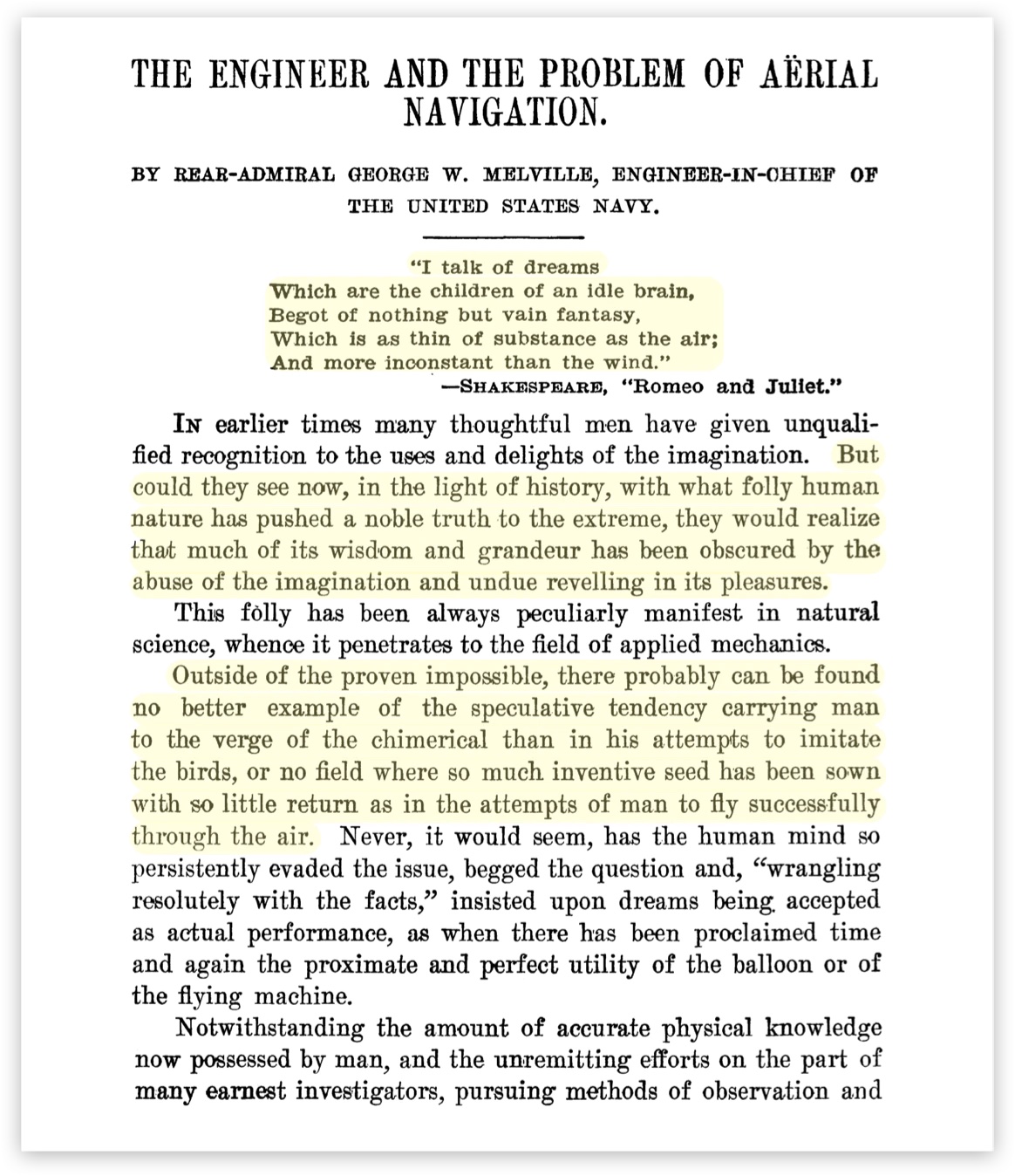
On the very first page he declared the entire notion a wasteful and delusional endeavor:
“There probably can be found no better example of the speculative tendency carrying man to the verge of the chimerical than in his attempts to imitate the birds, or no field where so much inventive seed has been sown with so little return as in the attempts of man to fly successfully through the air.”
1903: New York Times makes a bold prediction
The New York Times predicted manned flight would take between 1 and 10 million years to achieve, in an article titled “Flying Machines Which Do Not Fly.” The piece ended: “To the ordinary man, it would seem as if effort might be employed more profitably.”

Only nine weeks later, the Wright Brothers achieved manned flight.
1910: Flight is only for rich people
Once the Wright Brothers proved flight was possible, some assumed it was just a pointless rich play thing. Famed astronomer William H. Pickering said, “The expense would be prohibitive to any but the capitalist who could use his own yacht.”
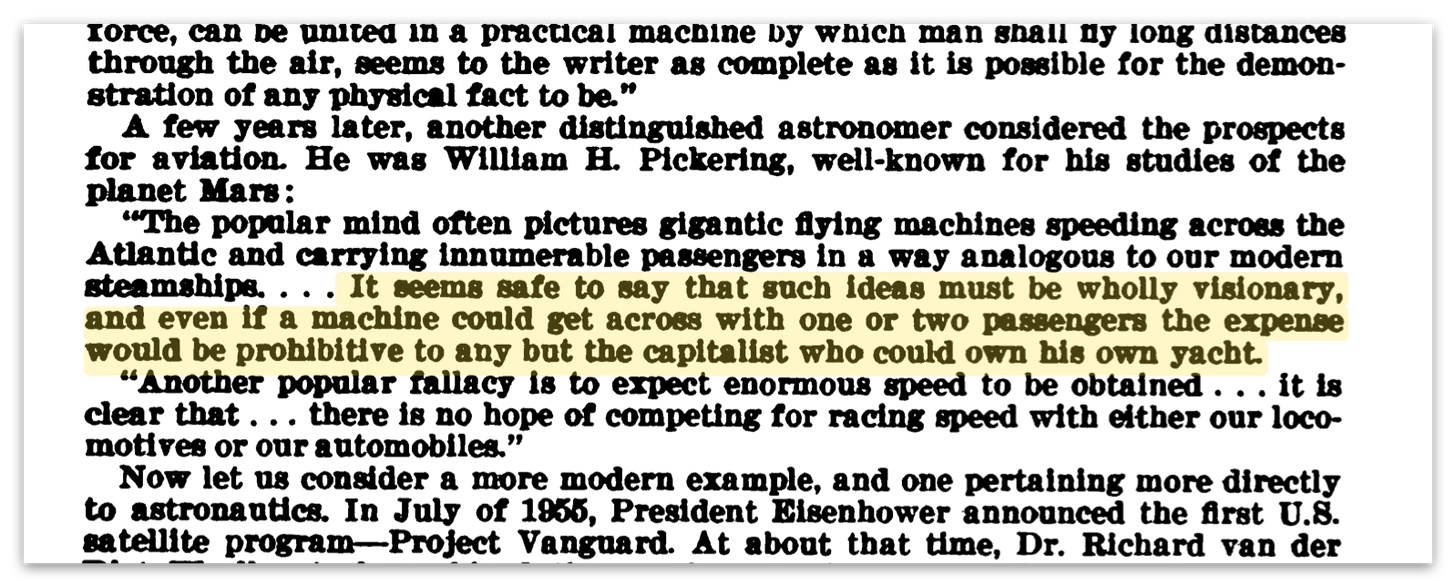
We conquered the skies, then space beckoned…
1955: Space travel is “utter bilge”
In 1955, President Eisenhower announced the first U.S. satellite program. When asked about the project, a British astronomer replied: “Space travel is utter bilge,” saying it would be a “frightful waste of public money.”
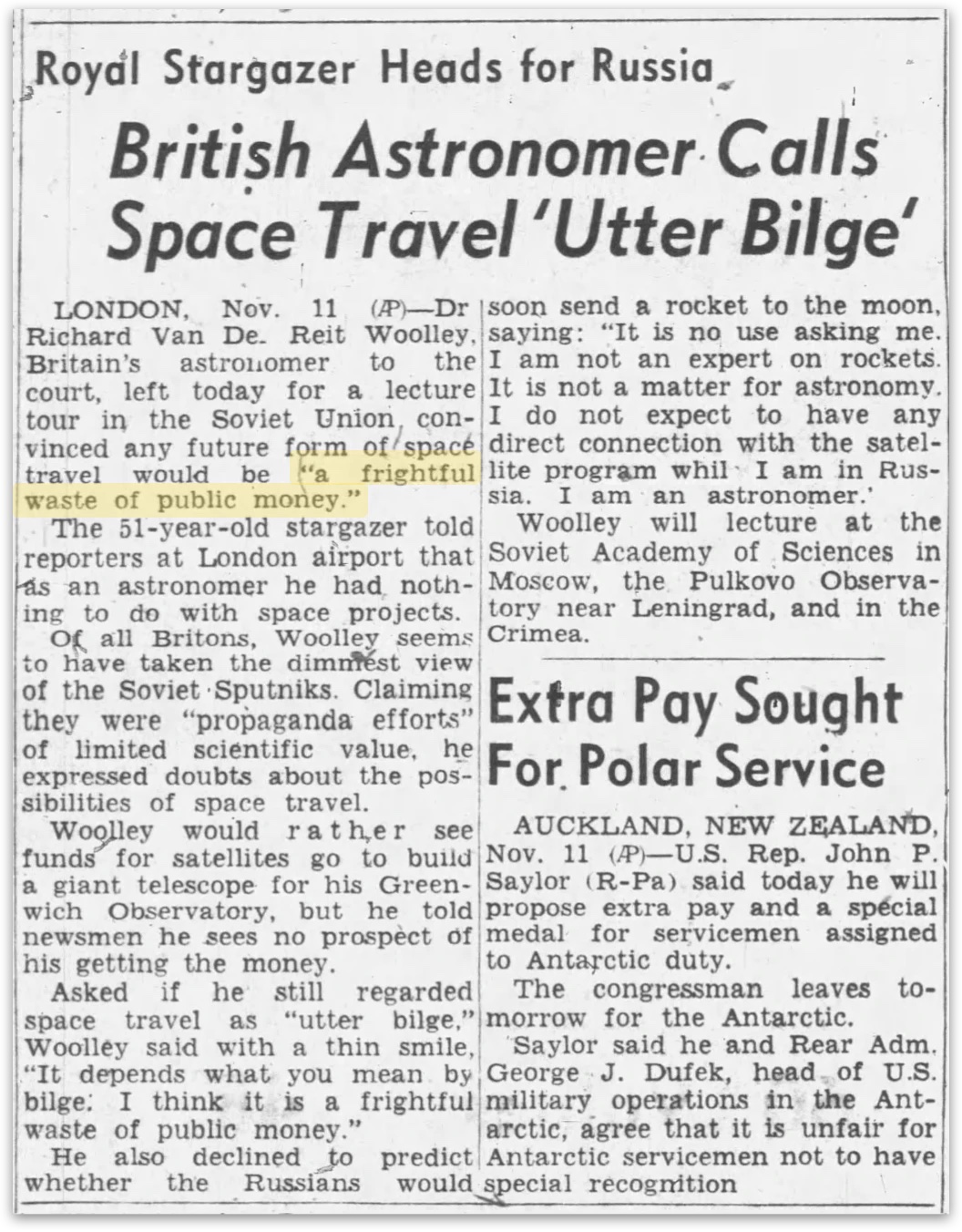
1960s: “Moondoggle”
When President Kennedy announced his moonshot, there was some enthusiasm, but soon a movement grew against the idea. Barry Goldwater said it was a big waste (at a $100-a-plate dinner) and that the U.S. was “moon-struck,” saying: “While our eyes are fixed upon it, we could lose the earth or be buried in it.”

Many Americans and even astronomers opposed the plan for various reasons. Even former President Eisenhower (who created NASA) said: “Anybody who would spend $40 billion in a race to the moon for national prestige is nuts.” The term “moondoggle” was coined, and it stuck.
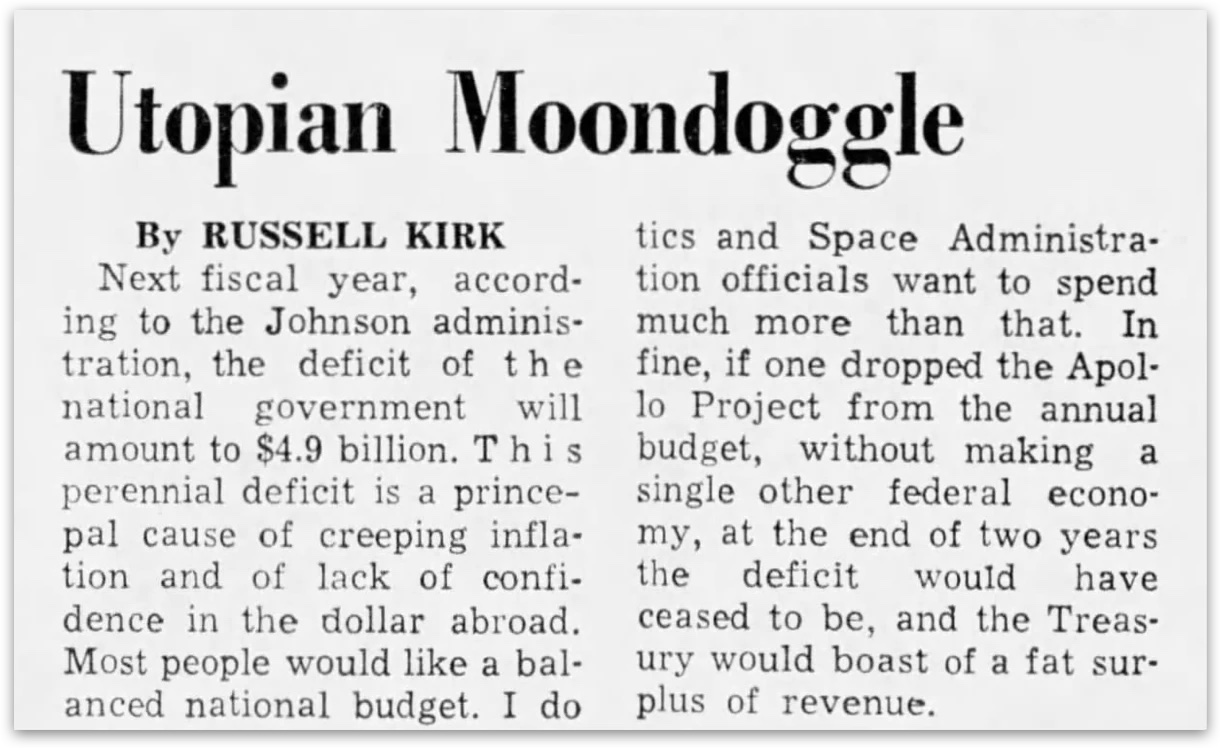
When the day of the moon landing arrived, public approval was higher. The entire world was excited — but not quite everyone. The Guardian quoted a teachers’ union organizer who said he had decided to go to bed early on the night of July 20th, 1969 because it was “a trivial prestige exercise which ignored the social conditions existing in the world.”
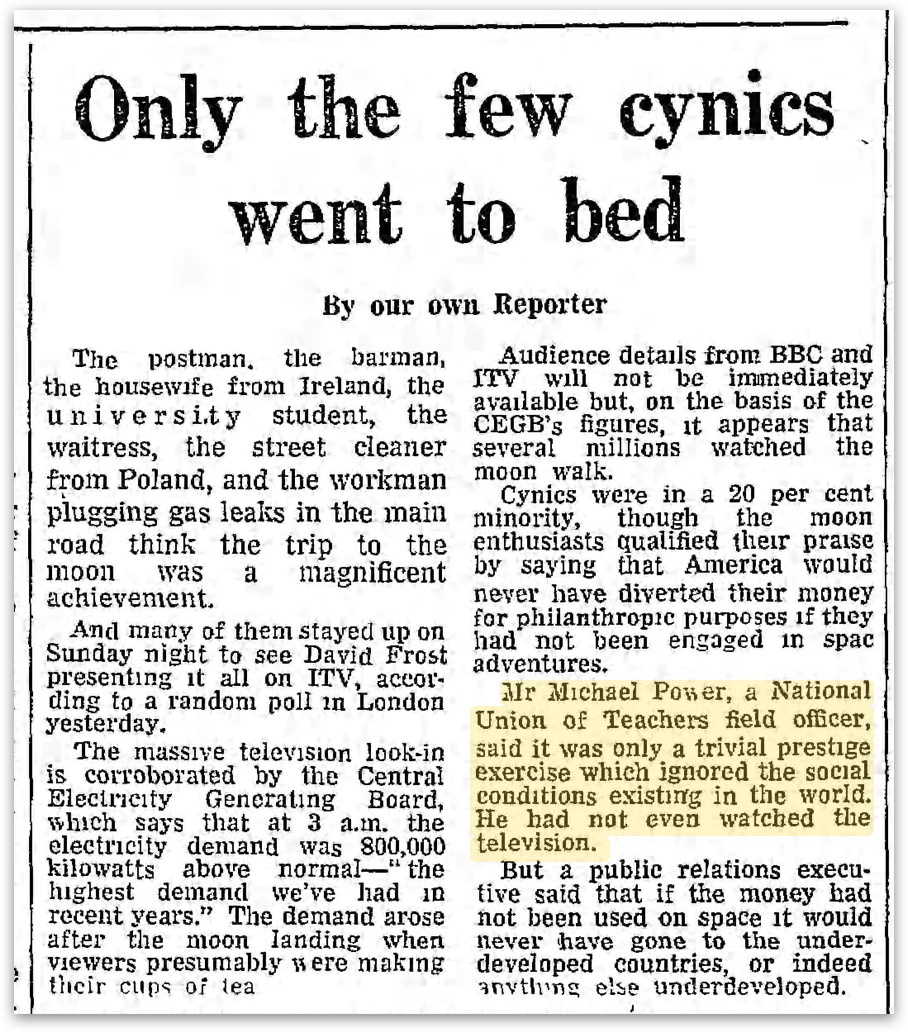
Haters gonna hate
These are important reminders that pathological cynics always will find a way to complain. Before air and space travel were possible, they said it was impossible. When they were proven wrong, they said it was an egotistical waste of money with no real utility. The pattern continues today.
This article was originally published on the Pessimists Archive. It is reprinted with permission of the author.


